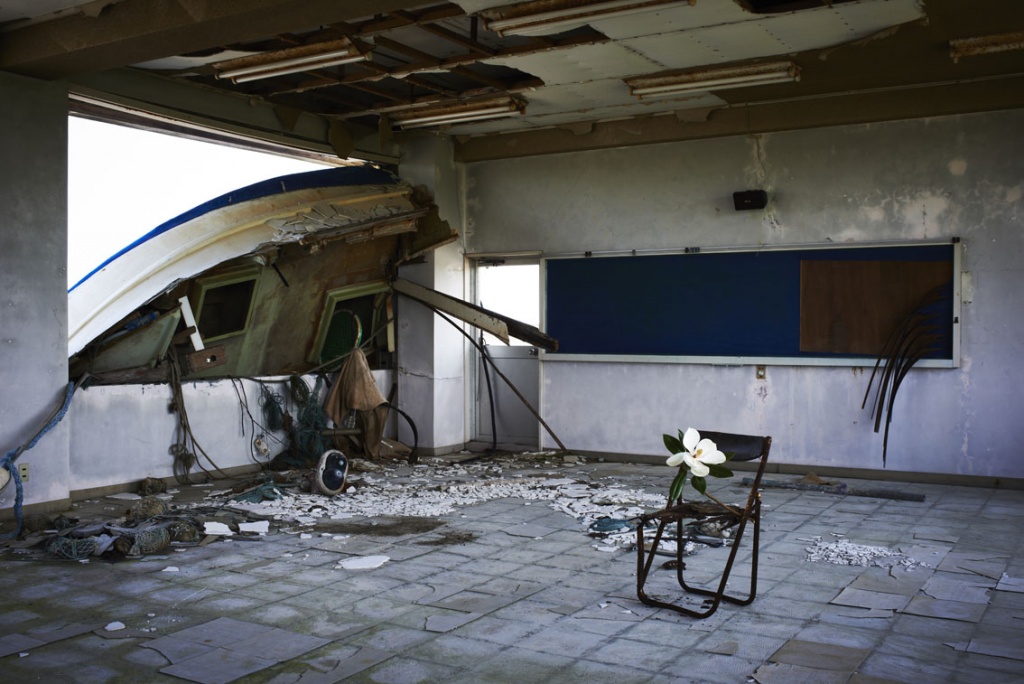Atsunobu Katagiri
“SACRIFICE: Words Spoken by Flowers within 30 km of the Fukushima Daiichi Nuclear Power Plant”
April 11 – 23, 2017
Open everyday during exhibitions
Free Admissions
Venue hours :11am – 8pm
Shibuya Hikarie 8/ CUBE
With the support of Hama-dori, Naka-dori, & the Aizu Tri-Regional Culture Collaboration Project,
Minamisoma City Museum, and SEIGENSHA ART Publishing,Inc.
Opening Performance: Tuesday, April 11, 6:30pm – 8pm
Closing Talk: Sunday, April 23, 3pm –5pm
Exhibition information: http://www.hikarie8.com/cube/2017/03/-sacrifice.shtml
…………………………………………………………………………………………
Opening Performance
“The words of flowers blooming in the Fleconian period”
Atsunobu Katagiri (Flower Arrangement) × KITSUNEBI (Poetry Reading+Rap)
Gallery Talk: Fumihiko Futakami (Minamisoma City Museum)
*This talk event will be proceeded only in Japanese.
Tuesday, April 11 6:30pm – 8pm
Shibuya Hikarie 8/ CUBE (next to 8/ ART GALLERY/ Tomio Koyama Gallery on the 8th floor of Shibuya Hikarie)
Admission Free
Booking: NOT required
Closing Talk
“Approach for Repose – the Relationship between Art and the Affected Areas”
Norio Akasaka (Folklorist, Fukushima Museum) × Atsunobu Katagiri (Flower Arrangement)
Sunday, April 23 3pm – 5pm (doors open: 2:30pm)
Shibuya Hikarie 8/ COURT (in front of 8/ ART GALLERY/ Tomio Koyama Gallery on the 8th floor of Shibuya Hikarie)
Admission ¥1,000
Booking: REQUIRED
*This talk event will be proceeded only in Japanese.
Please send us an email for your reservation.
Email: event@tomiokoyamagallery.com
Title: April 23 Talk Event
Subject: name/ phone number/ number of people
…………………………………………………………………………………………
The Hikarie Contemporary Art Eye Series introduces galleries and artists who lead the Japanese art scene with new perspectives. The 6th exhibition of the series features Atsunobu Katagiri’s project in Fukushima, which reveals the power of nature, power of land, and traces of human activities through a focus upon flowers.
– Tomio Koyama
In 2013, during the third summer since the earthquake, the coastal area of Minamisoma City, Fukushima, which was affected by the tsunami, was filled with flowers named “Monochoria Korsakowii” in bloom. This flower is a rare native plant that has been classified as an endangered species type 2 by the Japanese Ministry of Environment. The flower had disappeared because of costal land reclamation activities by humans, but it has come back to life after the tsunami. It was chased out by people, but came back when people were gone. The innocent blue flowers embrace the ruthless laws of nature. ‘Won’t you try arranging these flowers?’ That invitation led me into long travels in Fukushima after the earthquake, continuing to this day. I have arranged many flowers. Flowers were blooming, as is natural, in the tsunami-affected areas, abandoned buildings, in the corners of a ghost town, and on the hill where one can view the nuclear power plant that interspersed radioactive substance…. In them was both the sorrow of losing things, and the hope that life still goes on. The beautiful flowers seemed to be like pictures in the minds of those who survived the catastrophe. Looking back, this act may have been my prayer for the destroyed land and lost lives. This is now the sixth spring since the earthquake. Flowers bloom again in Fukushima, where the reconstruction is still far from being completed. The sight of those who only look ahead does not catch these flowers. They cannot hear the flowers’ voice. I hope that they stop for a while, and look down at the flowers, and listen.
– Atsunobu Katagiri
A flower arrangement artist born in 1973 in Osaka. In 1997, aged just 24, he succeeded to the professional name of master of the Misasagi ikebana school in Sakai City, Osaka. His arrangement style varies from the traditional to contemporary art, and he has worked on many collaborative projects with artists in other genres. His work employs various plants from small wild grasses to his longstanding theme, the large installation with cherry trees, exploring elements of animism, one of the originating sources of flower arrangement. He has stayed in Minamisoma city, Fukushima as an invited artist for the “Hama-dori, Naka-dori, & Aizu Tri-Regional Culture Collaboration Project” organized by the government’s Agency of Cultural Affairs since 2013, and has created numerous works. His book Sacrifice: The Ikebana of Regeneration, Offered to the Future (published by SEIGENSHA ART Publishing,Inc.) has been released as the documentation of the project.
Artist Website:http://www.katagiriatsunobu.com/sacrifice/

